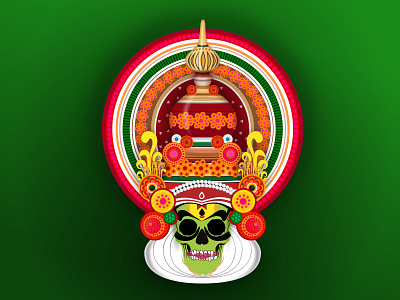Kathakali - Indian Classical Dance - Kerela, India
The theory and foundations of Kathakalī are same as other major classical Indian dances, traceable to Sanskrit texts such as the Natya Shastra, but the expression style in each is very different and distinctive.
The Japanese performance arts Kabuki/Noh and Chinese performance art Peking Opera are similar in many ways to Kathakali.
The makeup follows an accepted code, that helps the audience easily identify the archetypal characters such as gods, goddesses, demons, demonesses, saints, animals and characters of a story. Seven basic makeup types are used in Kathakali, namely Pachcha (green), Pazhuppu (ripe), Kathi , Kari, Thaadi, Minukku and Teppu.
Red is the code for evil streak. Some characters have a green face (representing heroic or excellence as a warrior) with red dots or lines on their cheeks or red-coloured moustache or red-streaked beard (representing evil inner nature), while others have a full face and beard coloured red, the latter implying excessively evil characters. Black is the code for forest dwellers, hunters, and middle ground character. Demonesses and treacherous characters are also painted black but with streaks or patches of red.
